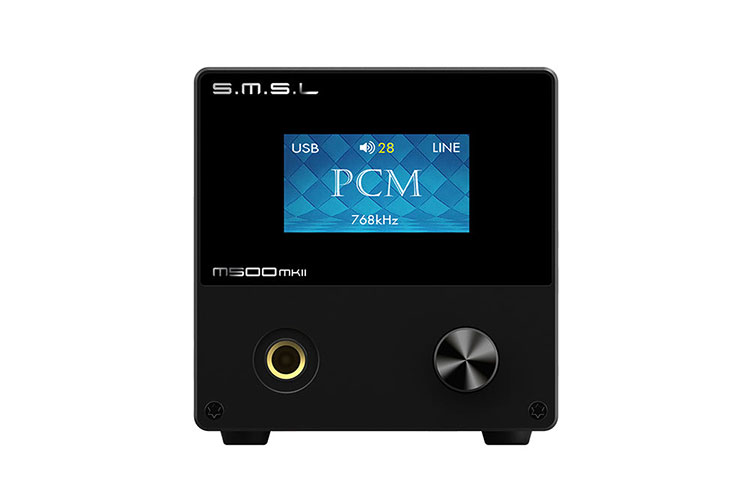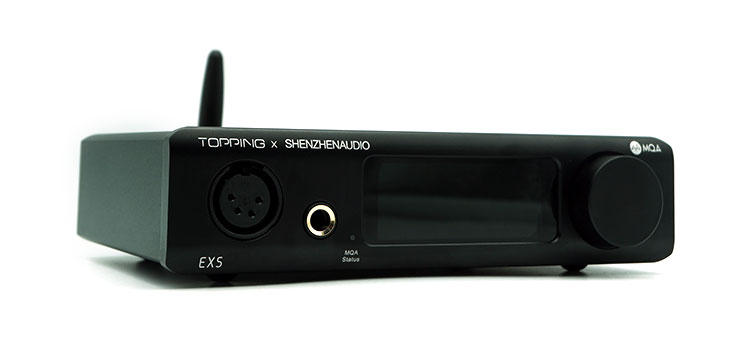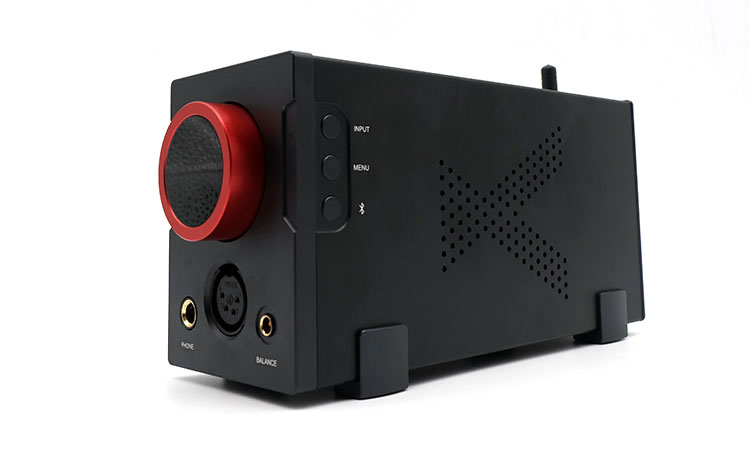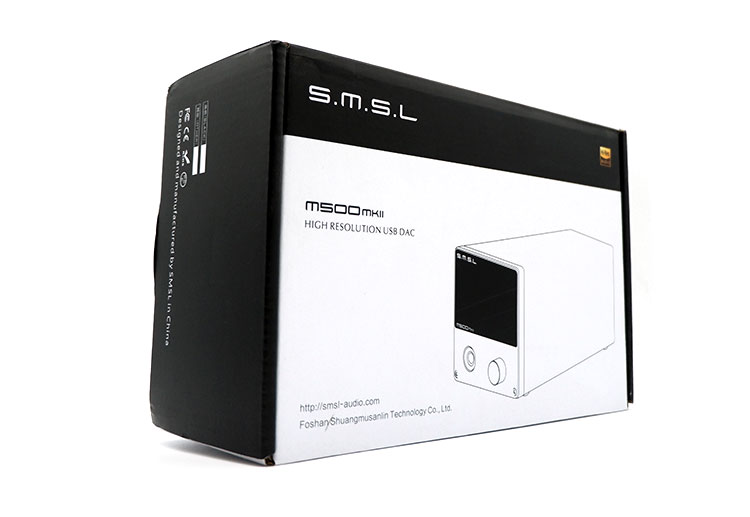Synergy
Power
Having 2W on tap for 16Ω and 1W for 32Ω is usually enough for most headphones, so I tested the M500 MKII’s headphone output with the headphones that I have on hand.
I tried it with the Sennheiser HD600 and only needed around 50 on the volume dial while on high gain for my comfortable listening levels. Using a planar magnetic headphone like the Hifiman Ananda, I needed even less at just 45 to reach my normal listening levels.
Pairings
It’s interesting to see that the headphone amplifier section can be significantly different from the DAC section depending on the downstream amplifier connected to it.
So when I started to listen to the headphone amplifier section, I began with my HD600 which has a more neutral tonal balance but combined with the amp section on the M500 MKII, there is a lack of body and scale in the presentation.
The next headphone that I tried is the Sendy Apollo, which we have reviewed recently. And I honestly find the pairing to be complementary, where the more full-bodied presentation on the Apollo induced some much-needed heft without much loss in terms of detail retrieval and texture. Which also translates to better imaging and layering.
Using the M500 MkII DAC only, I plugged it into SMSL’s HO200 analog amplifier, which uses the same technology as the inbuilt amp on the M500 MKII. This resulted in a similar tonality to what I got from the headphone output, but this time, there is a more fleshed-out layering and imaging presentation. This means that the Apollo is still an ideal pair for this combination.
The next amp that I used with the M500 MKII is the Topping A30 Pro, which has a more full-bodied and energetic presentation. Using this pairing made my HD600 sing, allowing the more euphonic midrange to shine through without introducing much sibilance while maintaining the detail retrieval capabilities of the HD600.
Select Comparisons
Topping x Shenzehn EX5
$349
Technical
Both these DAC/amps have similar features, as they both have Bluetooth connection, MQA support, balanced and single-ended DAC outputs, and a headphone amplifier section. It’s just that the headphone amplifier section on the EX5 is also equipped with a 4-pin XLR output, instead of just a solitary ¼” jack in the front.
However, the price gap between the 2 DAC/amps comes mainly from the DAC chip used, as the EX5 uses 2xES9038Q2M chips instead of ES9038 Pro DAC chips. The MQA support on the EX5 is limited to the USB inputs, so the EX5 can’t unfold MQA CDs when the coaxial input is used.
Design
Both DAC/amps have a similar finish having a thick aluminum chassis painted in black. But the EX5 has a flatter profile and is instead wider rather than being tall.
While the volume knob on the EX5 is much larger, it doesn’t make it any easier to use since the menu system on the EX5 is more complex.
So even if both DAC/amps have a similar set of options, the options on the EX5 are much harder to access as most options can only be changed using the remote control, and even then it would usually require memorizing the codes within the options.
Performance
Using the DAC outputs at the rear, the EX5 has a generally smoother and warmer presentation at the expense of ultimate detail retrieval.
This ends up making the bass more rounded, but less textured. The vocal range on the other hand is induced with a more artificial euphonic coloration. The treble on the EX5 is comparatively edgier, there is less weight behind the treble notes leaving wind instruments with a less natural sense of space and airiness.
Comparing the headphone amplifier sections of the 2 devices, the EX5 has a comparatively more weighty presentation, giving bass notes more heft and palpability.
However, the palpability seems a bit forced, while having less airiness resulting in a more closed-in and less precise soundstage presentation. The lower treble is also more pronounced, making it more fatiguing for longer listening sessions.
xDuoo XA-10
$479
Technical
Both devices also have a similar set of features, having MQA decoding, and even a Bluetooth connection. The XA-10 doesn’t have balanced inputs but xDuoo surprisingly added a pair of single-ended inputs that allows the user to use it purely as an amp.
The DAC section on the XA-10 uses a comparatively more dated pair of AK4493 DAC chips, they’ve become a rare commodity as of late, so the XA-10 might be a good option for those looking at an AK based DAC.
The XA-10, it has a more powerful class A amplifier capable of 4W into 32Ω. This leads me to believe that the XA-10 is designed as an amplifier that happens to have a DAC, while the M500 MKII would seem like a DAC which happens to have an amp section?
Design
The 2 devices have a similar form factor and footprint, though the XA-10 has a slightly narrower and taller profile. Also, the screen on the XA-10 is much simpler, as it uses an LED-based screen instead of a colored TFT screen.
Controls on the XA-10 are more tactile in comparison, so there are buttons to change the input and Bluetooth directly. However, the XA-10 also uses a menu system to change the gain and filter settings. But what I find missing with the XA-10 is any remote control functionality, which means that it would be less practical for use as a stereo DAC/preamp.
While the form factor is similar on both devices, the XA-10 doesn’t have the power supply built in. Instead, it uses an external 12V switch mode power supply, which makes it more cluttered, but can theoretically be switched out for a better power supply down the road.
Performance
Tonally, the 2 devices aren’t that far off, but there is a marked difference in the presentation mainly due to the class-A amplifier section on the XA-10.
This class A section gives the XA-10 a generally smoother and softer presentation making each drum hit less flowy instead of impactful. Although this benefits the vocal range by giving it more sweetness, the XA-10 ends up being more glossed over comparatively.
With more energetic tracks, the XA-10 rounds off the edges a bit more, making things sound blunted while steering clearly away from being sibilant. This gives the XA-10 an overall warmer presentation while presenting a smoother but less detailed take on the music.
The size of the soundstage is similar on both DACs, as they can accurately create images beyond my head. However, the XA-10 is less precise in the creation of a delineated image within the soundscape. Similarly, the layers within the soundstage sound less defined, making the images a bit hazier in comparison.
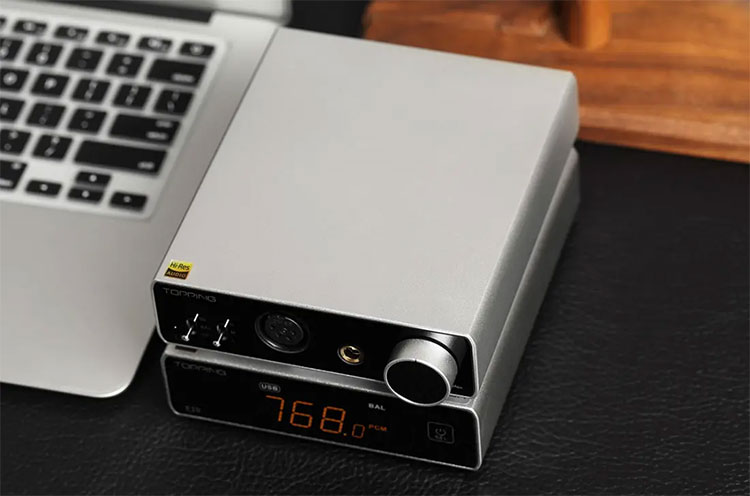
Topping E50 & L50
$269 & $229
Technical
Of course, the E50 & L50 is a stack, but the stack comes at a similar price point with a similar set of features to the M500 MKII. The E50 & L50 stack doesn’t have Bluetooth connectivity, but the rest of the connection options are also available with the stack, with the L50 even having an option for balanced output that’s capable of up to 3.5W into 16Ω, which is almost double the power.
Internally, the E50 has a more modest ES9068AS DAC chip, while retaining the same decoding capabilities, including MQA support. Even distortion numbers on the 2 setups are similar, with the DAC section having a THD of 0.00006%, but the amp section on the L50 has higher measured distortion at 0.00009%.
Design
Being a stack, the E50 & L50 is bulkier and harder to set up since there are 2 devices to worry about. Also, the E50 & L50 are both powered using an external power supply, so both devices would need an external power supply which may add to the clutter making it comparatively more complicated to set up and maintain.
Both setups also have menus and remote control capability, but the menu navigation on the E50 is much more complex particularly if you want to do it directly on the device. Changing the settings using the remote control is also quite difficult on the E50 as the menu requires memorizing what the symbols mean.
Changing the settings and the volume on the L50 amplifier is much simpler though since it has tactile controls. These tactile controls allow the user to change the settings more readily, as it only requires a flick of the switch instead of having to navigate through the menu to reach the particular setting.
Also, the L50 has more precise control over the volume since it has 3 gain settings instead of 2.
Performance
With the large gap in the rated power output, the first thing that I notice is that I wouldn’t need to crank up the volume as much with the L50 as I needed only about 50% on medium gain for most of my headphones. However, both setups easily drive most of my headphones to sufficient levels, so I’m not too worried about this.
Tonally, the Topping stack has a comparatively more liquid and smooth presentation, particularly with the vocal range where there is a perceived uptick in vocal euphony. With the bass, both setups are equally energetic, however, the Topping stack has a looser presentation making drum hits sound more dispersed.
The Topping stack also stays on the safer side when it comes to treble energy while maintaining some weight behind treble notes. This leads to cymbal hits having less bite comparatively.
The soundstage presentation is comparable on the 2 setups, but the Topping setup has a less chiseled imaging presentation. Layering is also less apparent with the Topping stack, as the elements within the soundstage tend to overlap with each other more often.
Our Verdict
Clearly, the M500 MKII doesn’t come in a conventional chassis, since it’s taller rather than wider. However, this makes it an interesting proposal, as it’s effectively more compact allowing it to fit in tighter spaces while not making too many compromises in terms of features even having enough space to make plugging in inputs and outputs quite comfortable.
As a DAC/amp, the M500 MKII brings a detailed and natural presentation while staying on the safer side of sibilance, which is consistent with what I’ve heard with most other SMSL amps.
However, I believe that the M500 MKII excels more when it’s purely used as a DAC, and different amplifiers are used to complement the warmer and more energetic presentation on the M500 MKII.
With all the options available to the M500 MKII, I believe that it can be a great option as an all-in-one DAC/headphone amp, or even simply as a DAC/preamp to different downstream equipment.
SMSL M500 MKII Technical Specifications
- Inputs: USB, optical, coaxial, Bluetooth
- Outputs: 6.35 phone jack, RCA, XLR
- THD+N: 0.00006% (-123dB)
- HPA THD+N: 0.0001% (-120dB)
- HPA power: 2W x2 (16Ω), 1W x2 (32Ω)
- HPA gain: 0dB (low), +9dB (high)
- Dynamic range: 131dB (XLR), 123dB (RCA)
- SNR: 131dB (XLR), 126dB (RCA)
- USB spec: USB 2.0 asynchronization
- MQA decoder: USB, optical, coaxial
- MQA-CD decoder: Optical, coaxial
- DoP decoder: USB, optical, coaxial
Sampling rate and bandwidth
- USB: PCM 44.1 – 768kHz (32bit)
- DSD: 2.8224 – 22.5792MHz (1bit)
- Optical/coaxial: 44.1 – 192kHz (24bit)
- DoP: DoP256 (USB), DoP64 (optical/coaxial)
- Bluetooth: 5.0
- LDAC: 24bit/96kHz
- aptX HD: 24bit/48kHz_576kbps
- aptX: 16bit/44.1kHz_352kbps
- SBC: 16bit/44.1kHz_328kbps
- AAC: 16bit/44.1kHz_320kbps
Dimensions and Power
- Power consumption: 5W
- Standby power: <0.5W
- Size: 3.3 x 3.4 x 7.7” (85 x 88 x 197mm)
- Weight: 1.98lbs (0.9kg)




